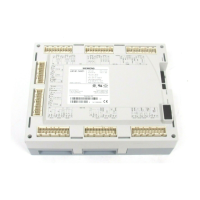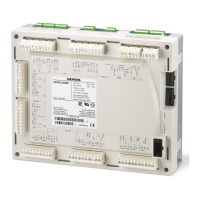15/28
Building Technologies Division CC1N7785en
20.11.2017
Function
In contrast to conventional amplifiers, the signal delivered by the flame detector is
handled dynamically and not statically. The flame detector signal is converted to a
sequence of control pulses and then fed to the flame relay circuit. The latter is designed
such that the flame relay can only be energized by a flame signal of the described form.
If the pulses change due to a faulty detector or faulty detector cables, the relay will be
deenergized and the burner control triggers the required safety actions. In the case of
UV supervision, it must also be ensured that self-ignition of the UV tube (e.g. due to
aging) does not simulate a flame signal. For that reason, incident radiation at the UV
cell is periodically interrupted by a shutter. In addition to the self-checking facility, the
flame signal circuit is subjected to a functional test during the prepurge time. If it does
not operate correctly, the startup sequence will be aborted or lockout initiated.
Furthermore, if mains voltage drops to a level where safe operation of the burner
control is no longer ensured, the burner will automatically shut down. When mains
voltage returns to the normal level, the burner control repeats the startup sequence. If
the detector signals are only slightly above the minimum levels, such mains voltage
fluctuations can also give rise to burner lockout however.
- The burner control is reset and in the start position (terminals 11 and 12 must
receive power)
- The air damper is closed. The end switch (z) for the CLOSED position must pass
voltage from terminal 11 to terminal 8
- All control contacts between terminals 12 and 5 (limit thermostat, control
thermostat, etc.) must be closed
Principle of
self-supervision
Prerequisites for
burner startup

